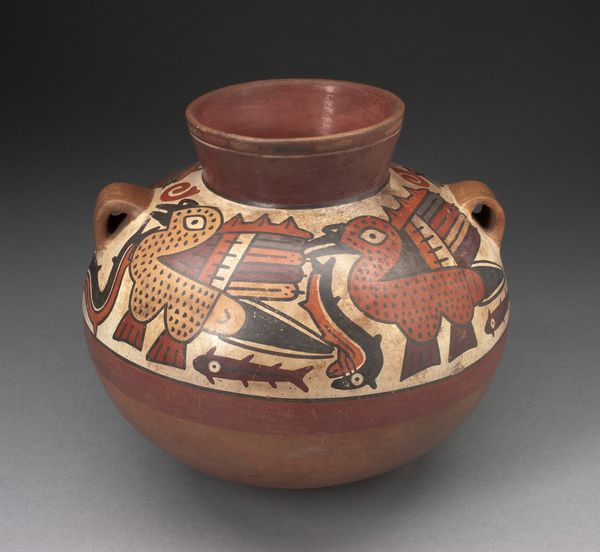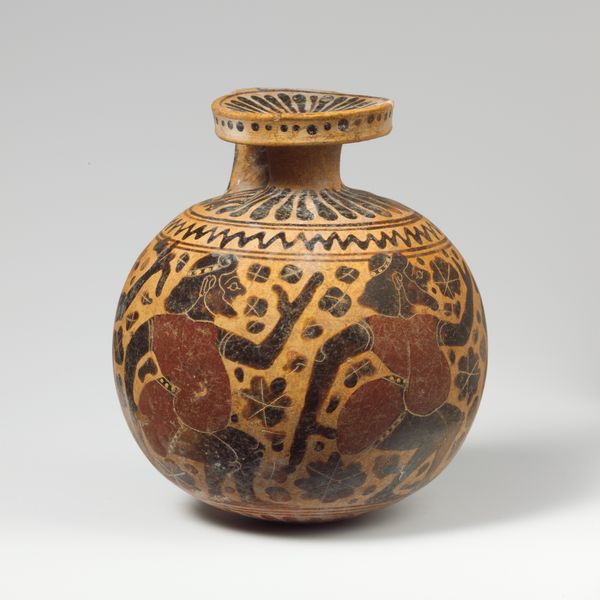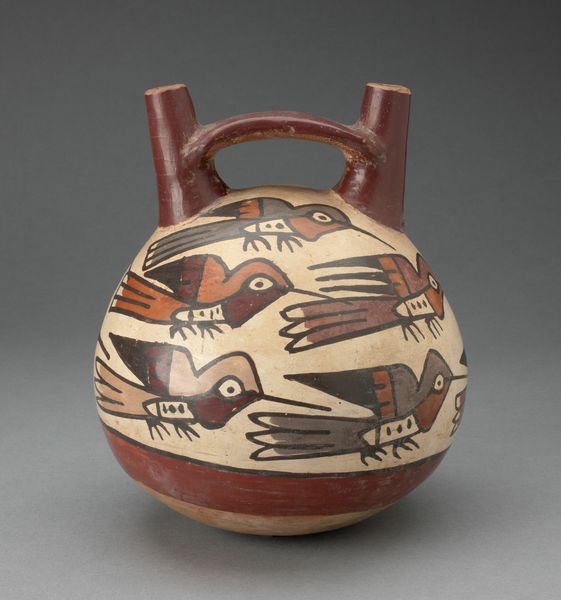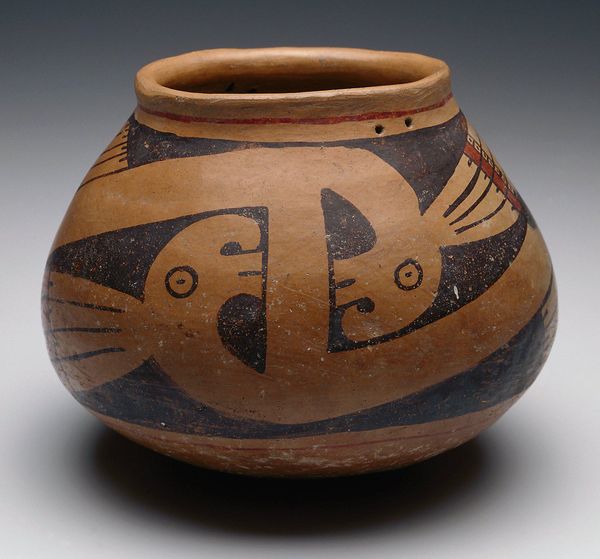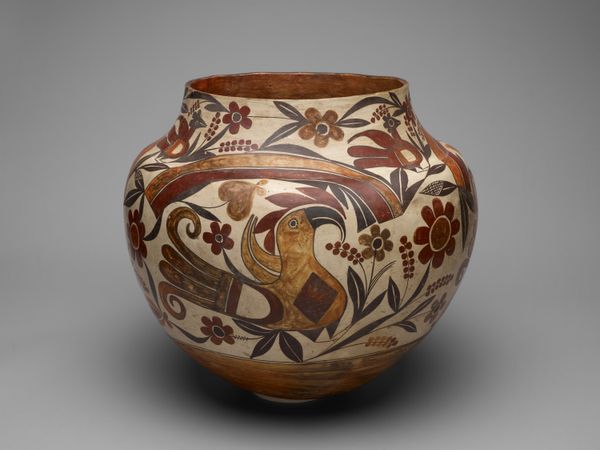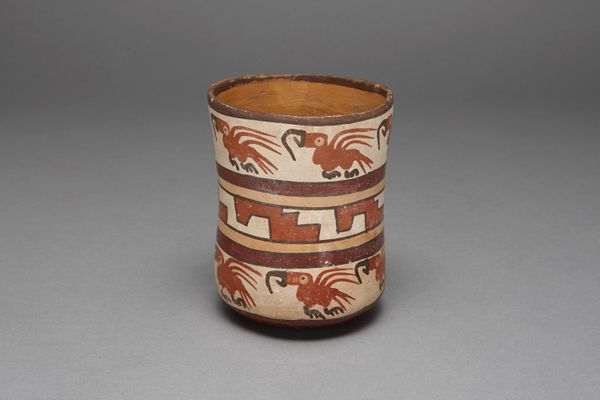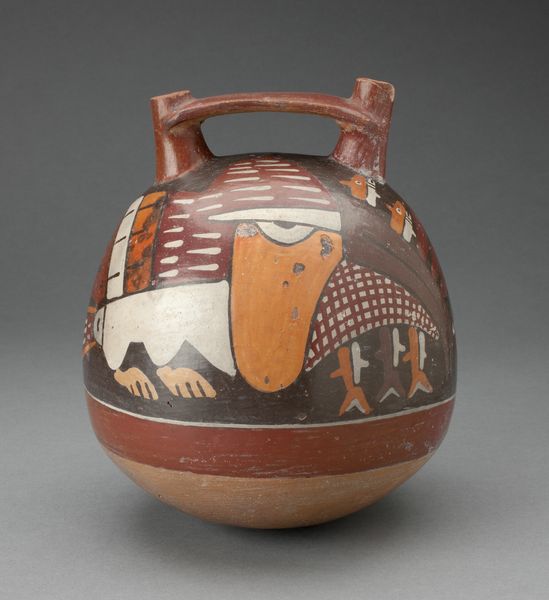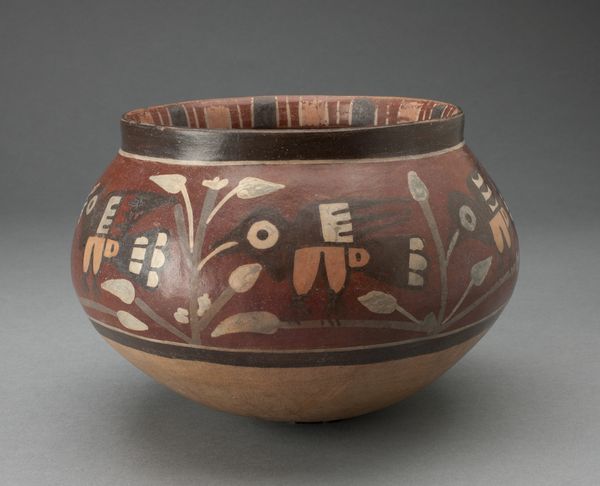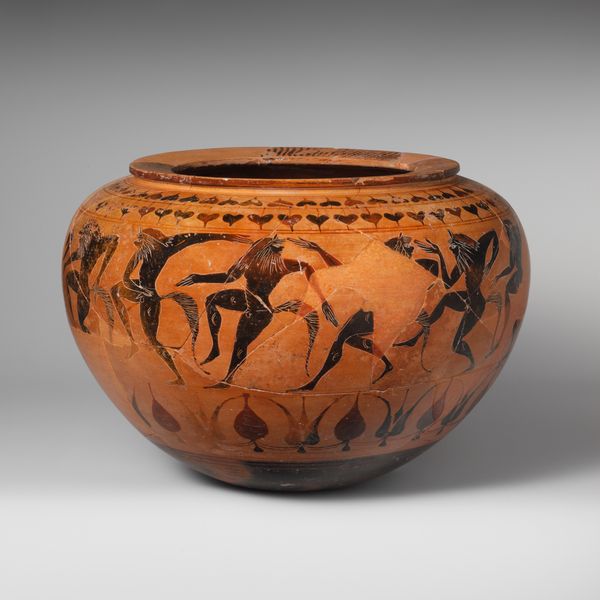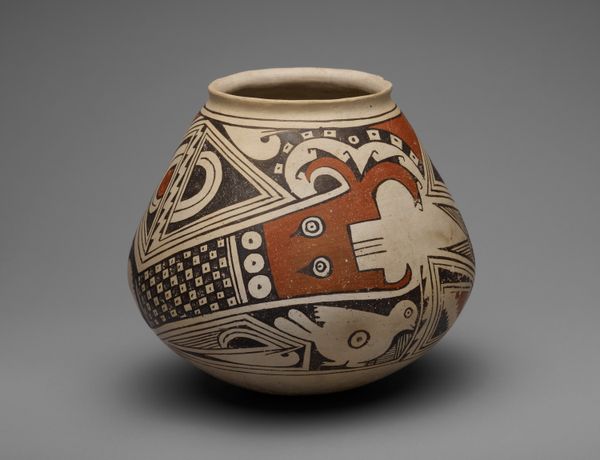
ceramic
#
ceramic
#
form
#
ceramic
#
decorative-art
#
indigenous-americas
Dimensions: 31.7 × 34.3 cm (15 1/2 × 17 in.)
Copyright: Public Domain
Editor: So, this is the Polychrome Jar, created around 1920 by Isabel Medina Toribio. It’s a ceramic vessel and the painted design feels quite striking with the bird motif and geometric shapes. What do you see in this piece? Curator: Beyond the beautiful form and decorative elements, I see a powerful assertion of Indigenous identity. Looking at the historical context of the 1920s, we must consider the systemic oppression faced by Indigenous communities. Art, in this instance, became a vital form of resistance and cultural preservation. What strikes you about the bird and its relation to the geometric patterns? Editor: Well, the bird seems very stylized, almost simplified, while the geometric patterns, though abstract, have a strong presence, perhaps representative of elements in nature or even cosmology? Curator: Exactly. The artist isn’t just creating a pleasing design; she is encoding knowledge and beliefs. The geometric patterns can be read as landscape, cosmology, clan symbols. Do you think about how Aitiye' negotiates cultural expression while living in a society that's actively trying to erase it? How do you see Aitiye’ as an artist actively participating in both preservation and, maybe, revolution? Editor: It definitely changes my understanding. I was focusing on the aesthetic, but now I see this jar as a vessel not just for water, but for cultural memory. The patterns act as symbols. Curator: Precisely. And through repeated creation and use of these forms, the artist transmits ancestral knowledge and challenges the dominant narrative. Consider it an act of sovereignty, reclaimed through art. Editor: This conversation has changed my perspective entirely. What seemed like a decorative object is actually a powerful expression of cultural resilience. I will not see the form as merely form, but the symbolic. Curator: I'm glad you appreciate the significance of embedding objects and art making in this larger context of power. Let’s remember to think critically about how art is shaped by the social and political landscape it emerges from.
Comments
No comments
Be the first to comment and join the conversation on the ultimate creative platform.

